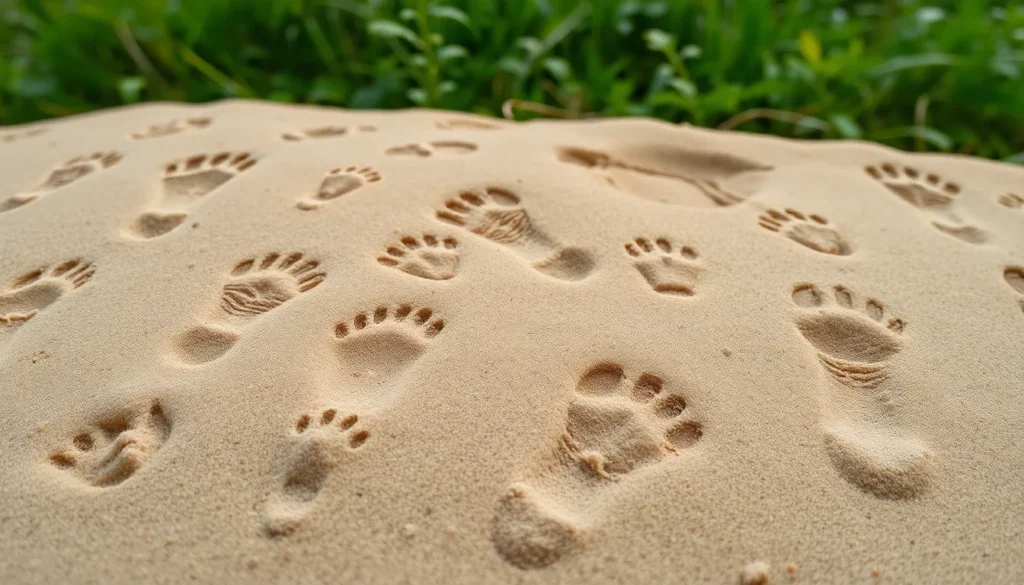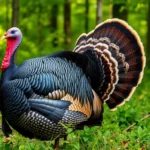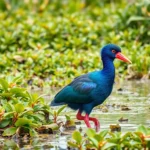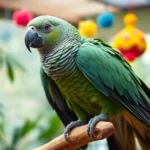We’ve all stumbled across mysterious tracks in mud, sand, or snow and wondered what creature left them behind. Bird footprints tell fascinating stories about our feathered neighbors’ daily adventures, feeding habits, and survival strategies. These delicate impressions offer us a unique window into the secret lives of birds when we’re not around to observe them directly.
Understanding bird tracks isn’t just for seasoned naturalists—it’s an accessible skill that transforms any outdoor experience into a detective adventure. Whether you’re walking through your backyard, hiking forest trails, or strolling along beaches, recognizing different bird footprints connects us more deeply with the wildlife sharing our spaces.
From the webbed prints of ducks to the distinctive three-toed marks of songbirds, each track reveals crucial information about size, behavior, and habitat preferences. We’ll explore how to identify common bird footprints and decode the stories they’re telling us about the remarkable industry of avian life.
Understanding Bird Footprint Basics and Identification
Bird footprint identification becomes simple when you know what to look for. Each species leaves distinctive marks that tell unique stories about their lifestyle and habitat preferences.
What Makes Bird Footprints Unique
Bird footprints differ from other animal tracks through their toe arrangements and specialized foot structures. We observe three main foot types that create distinct patterns in mud, sand, and snow.
Anisodactyl feet feature three forward-pointing toes and one backward toe, creating the classic bird track shape. Robins, cardinals, and most songbirds possess this common arrangement that produces clear four-toe impressions.
Zygodactyl feet show two toes pointing forward and two backward, forming an X-shaped pattern. Woodpeckers and parrots use this configuration for gripping tree bark, leaving symmetrical prints that appear almost flower-like.
Palmate feet display webbed connections between toes, creating paddle-shaped impressions. Ducks, geese, and other waterfowl leave these unmistakable tracks near ponds, lakes, and wetland areas.
Syndactyl feet partially fuse outer toes together, producing tracks with connected impressions. Kingfishers exhibit this rare foot type that creates distinctive merged toe patterns.
Key Elements to Look For in Bird Tracks
Track size provides the first clue to bird identification, ranging from tiny sparrow prints to massive heron impressions. We measure footprint length from the tip of the longest toe to the heel pad for accurate species determination.
Toe length ratios reveal feeding behaviors and habitat preferences within species groups. Long-toed birds like herons create elongated prints that distribute weight across soft marsh surfaces, while short-toed birds leave compact impressions on solid ground.
Claw marks appear as small puncture points extending beyond toe tips in many bird tracks. Raptors produce deep claw impressions that indicate their predatory lifestyle, while ground-feeding birds show lighter scratches from foraging activities.
Heel pad presence distinguishes walking birds from perching species in footprint analysis. Ground-dwelling birds like quail display prominent heel marks, whereas tree-dwelling songbirds rarely show heel impressions.
Web patterns between toes create exact identification markers for water birds. Full webbing connects all forward toes in ducks and geese, while partial webbing appears only between certain toes in coots and grebes.
Track depth indicates bird weight and substrate conditions when the footprint formed. Heavy birds like turkeys create deep impressions in soft soil, while lightweight finches barely register on firm surfaces.
Examining Common Songbird Footprint Patterns
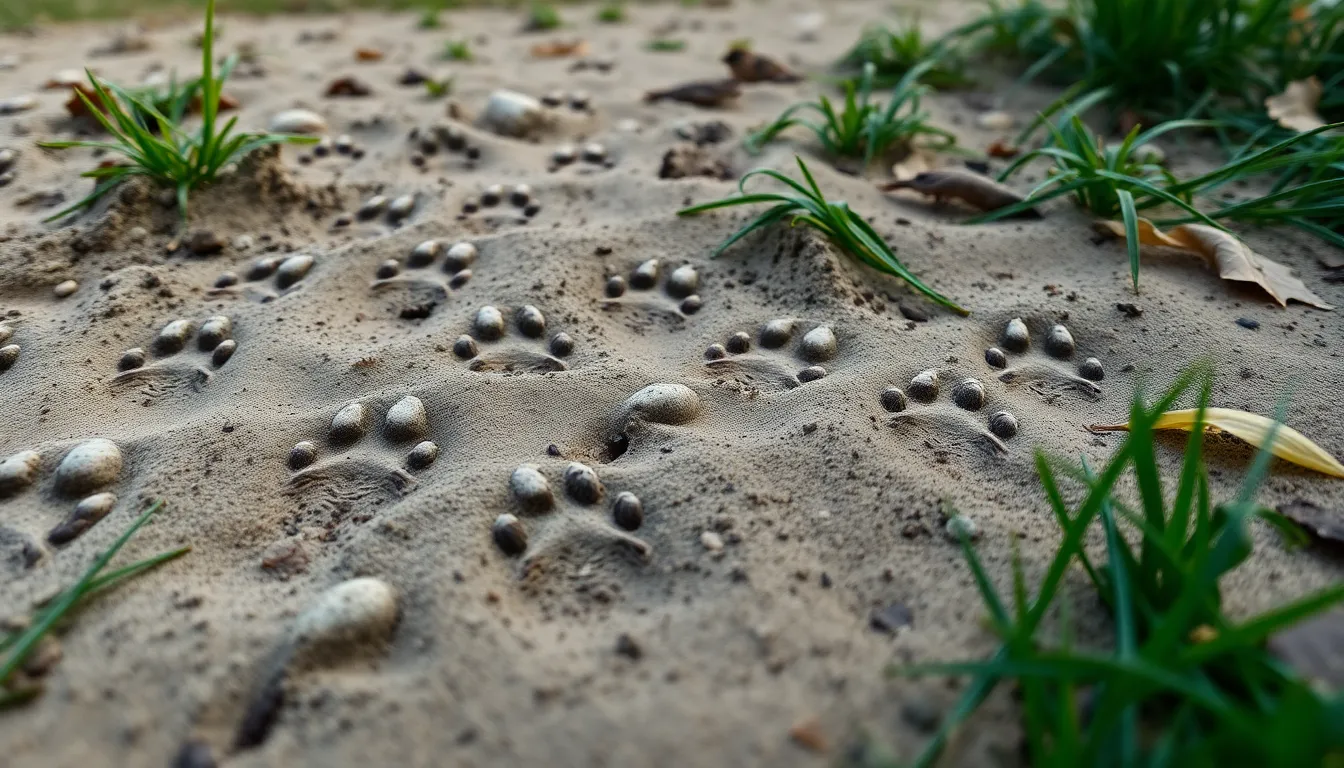
Songbird footprints reveal distinct patterns that help us identify these beloved backyard visitors. Each family of songbirds creates unique tracks that reflect their exact anatomy and ground-foraging behaviors.
Robin and Thrush Track Characteristics
American robins leave tracks measuring 1.5 to 2 inches long with their distinctive anisodactyl foot structure. The three forward-facing toes spread wide while foraging for worms, creating a fan-like pattern in soft soil. Their back toe extends straight behind, often showing a small but clear impression.
Thrushes produce similar tracks but typically measure slightly smaller at 1.25 to 1.75 inches in length. Wood thrushes and hermit thrushes create deeper impressions when they scratch through leaf litter searching for insects. Their tracks often appear in clusters where they’ve been actively digging and hopping.
Track spacing for robins ranges from 4 to 6 inches between steps during normal walking. When hopping, this spacing increases to 8 to 12 inches, with both feet landing nearly parallel to each other.
Sparrow and Finch Footprint Features
House sparrows create tiny tracks measuring just 0.75 to 1 inch in length with delicate toe impressions. Their tracks show three slender forward toes and one back toe, all ending in small but sharp claw marks. The lightweight nature of sparrows means their tracks appear shallow even in soft substrates.
Goldfinches produce similar-sized tracks but with slightly more curved toe patterns due to their seed-cracking lifestyle. Their tracks often appear near thistle plants or sunflower patches where they’ve been feeding. The spacing between goldfinch tracks typically measures 2 to 3 inches during hopping movement.
White-throated sparrows leave tracks measuring 1 to 1.25 inches with more pronounced heel pad impressions than house sparrows. Their scratching behavior creates distinctive double-track patterns where both feet have scraped backward through leaves simultaneously.
Cardinal and Blue Jay Track Identification
Northern cardinals produce robust tracks measuring 1.5 to 2 inches with thick, sturdy toe impressions. Their powerful feet create deep impressions even in firm soil, and the claw marks appear more prominent than other songbirds. Cardinals often leave tracks in pairs since they frequently travel with their mates.
Blue jays create larger tracks measuring 2 to 2.5 inches in length with strong, well-defined toe patterns. Their tracks show wider toe spreads than cardinals, reflecting their more varied diet and ground-foraging habits. The back toe of blue jay tracks appears particularly long and well-defined.
Track patterns for both species show confident, measured steps rather than rapid hopping. Cardinals typically space their tracks 3 to 5 inches apart, while blue jays create spacing of 5 to 7 inches between individual footprints when walking normally.
Identifying Waterfowl Bird Footprint Signatures
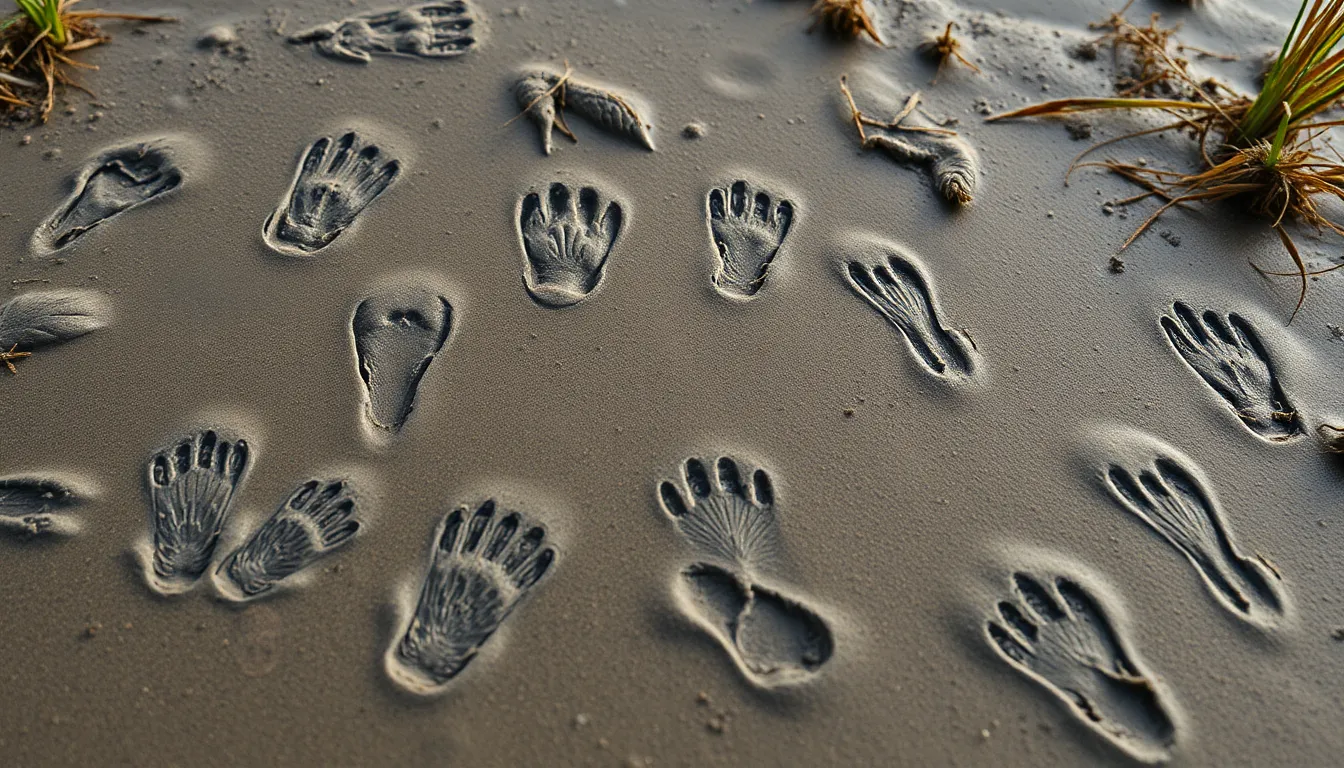
Waterfowl create some of the most distinctive footprint signatures we’ll encounter in wetland environments. Their specialized foot structures leave unmistakable marks that tell fascinating stories about their aquatic lifestyles.
Duck and Goose Webbed Track Patterns
Mallard ducks produce the classic webbed footprint measuring 2.5 to 3 inches long with three forward-pointing toes connected by prominent webbing. We can easily spot the distinctive paddle-like shape these tracks create in mud or sand along pond edges.
Canada geese leave much larger impressions spanning 3.5 to 4.5 inches with robust webbing patterns that extend fully between their toes. Their tracks appear deeper than duck prints due to their greater body weight, creating pronounced heel impressions in soft substrates.
Wood ducks generate smaller webbed tracks around 2 to 2.5 inches long with slightly less pronounced webbing than their mallard cousins. We notice their toe tips often show sharp claw marks from their tree-perching lifestyle, distinguishing them from purely ground-dwelling waterfowl.
Northern pintails create elongated tracks measuring 2.75 to 3.25 inches with narrow webbing patterns that reflect their streamlined body shape. Their footprints typically show less depth variation between toes compared to heavier duck species.
Heron and Crane Long-Toed Impressions
Great blue herons leave impressive four-toed tracks measuring 4 to 5.5 inches long with extremely thin, elongated digits. We can identify their distinctive rear toe impression that points backward, creating an asymmetrical pattern unlike typical waterfowl tracks.
Sandhill cranes produce massive footprints spanning 4.5 to 6 inches with thick, sturdy toe impressions and prominent claw marks. Their tracks show less toe spread than herons, reflecting their more terrestrial walking behavior in wetland margins.
Green herons create smaller versions of great blue heron tracks measuring 2.5 to 3.5 inches with the same characteristic long-toed pattern. We notice their tracks often appear in clusters near water edges where they hunt for small fish and amphibians.
Great egrets generate tracks similar to great blue herons but slightly smaller at 4 to 5 inches long with more delicate toe impressions. Their footprints frequently show deeper heel impressions from their patient hunting stance in shallow waters.
Shorebird Footprint Variations
Killdeer tracks measure 1.25 to 1.5 inches long with three forward-pointing toes and distinctive round heel pads. We can spot their erratic track patterns that zigzag across mudflats as they search for insects and small invertebrates.
Yellowlegs species create slender three-toed impressions measuring 1.5 to 2.5 inches depending on whether they’re greater or lesser yellowlegs. Their tracks show minimal webbing between toes, appearing almost stick-like in soft mud substrates.
Dunlin produce tiny clustered tracks measuring just 0.75 to 1 inch long with thin toe impressions and minimal heel definition. We find their tracks in dense concentration patterns along shorelines where flocks feed together on small crustaceans.
American avocets leave distinctive tracks measuring 2 to 2.5 inches with partial webbing between their front toes. Their footprint signatures often show deeper impressions on one side due to their side-sweeping feeding motion in shallow water.
Recognizing Raptor Bird Footprint Characteristics
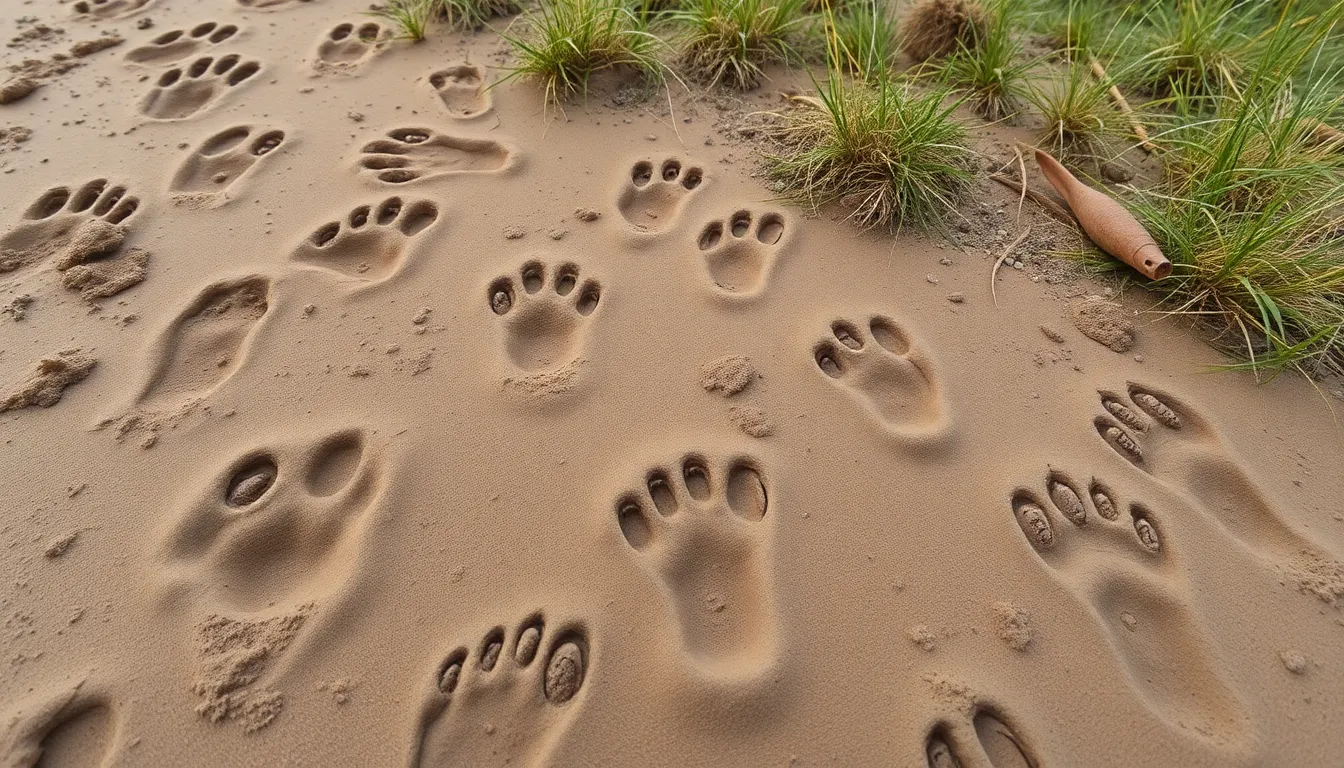
Raptors leave some of the most distinctive footprints in nature. Their specialized hunting adaptations create unmistakable talon marks that tell powerful stories of predation and survival.
Hawk and Eagle Talon Marks
Sharp talon impressions dominate hawk and eagle tracks, measuring 2.5 to 4 inches across depending on species size. Red-tailed hawks create tracks with four prominent toe marks, each ending in deep curved impressions from their razor-sharp talons. Bald eagles produce the largest raptor tracks at 3.5 to 4.5 inches, featuring massive talon gouges that penetrate soft substrates up to half an inch deep.
Track patterns reveal their hunting behavior through widely spaced impressions. Hawks typically leave tracks 8 to 12 inches apart when walking on the ground, while eagles space their prints 12 to 18 inches apart. Cooper’s hawks create smaller tracks measuring 2 to 2.5 inches with slender toe marks, contrasting sharply with the robust impressions of red-shouldered hawks.
Substrate tells important stories about raptor feeding habits. We often find hawk tracks near prey remains on sandy or muddy surfaces, where their talons leave the clearest impressions. Fresh tracks show sharp, clean edges while older impressions develop rounded margins as weather erodes the fine details.
Owl Track Patterns and Features
Feathered feet create unique characteristics in owl tracks that distinguish them from other raptors. Great horned owls leave tracks measuring 3 to 4 inches across, with fuzzy edges from their feathered toes that extend all the way to their talons. Barn owls produce heart-shaped tracks measuring 2 to 3 inches, featuring asymmetrical toe arrangements that reflect their specialized hunting adaptations.
Walking gaits differ significantly from other birds due to their ground hunting behavior. Screech owls create tiny tracks measuring 1.5 to 2 inches with closely spaced impressions, typically found near tree bases where they hunt for insects and small mammals. Snowy owls leave the most robust owl tracks at 4 to 5 inches across, often found in open areas where they pursue prey on foot.
Silent movement characteristics appear in their track depth and spacing. Owl footprints show minimal depth variation because their lightweight bodies and soft feathers create gentle impressions. We notice their tracks often appear suddenly without approach patterns, reflecting their silent flight capabilities and surprise landing techniques.
Falcon Footprint Identification Tips
Speed adaptations create distinctive track characteristics in falcon footprints. Peregrine falcons leave narrow tracks measuring 2.5 to 3 inches with elongated middle toes that enhance their gripping power during high-speed captures. American kestrels produce tiny tracks measuring 1.5 to 2 inches with delicate toe impressions that reflect their lightweight build.
Landing patterns reveal their hunting strategies through track arrangement. Prairie falcons create scattered track clusters where they land to consume prey, with individual prints showing deep talon marks from their powerful grip. Merlin tracks appear in short sequences near perching sites, measuring 2 to 2.5 inches with compact toe arrangements.
Substrate preferences help locate falcon tracks in optimal conditions. We find the clearest impressions on firm sand or dried mud where their sharp talons penetrate just deep enough to leave lasting marks. Rocky perches rarely show complete tracks, but we can identify individual talon scratches on stone surfaces where falcons land repeatedly.
Discovering Ground-Dwelling Bird Footprint Types
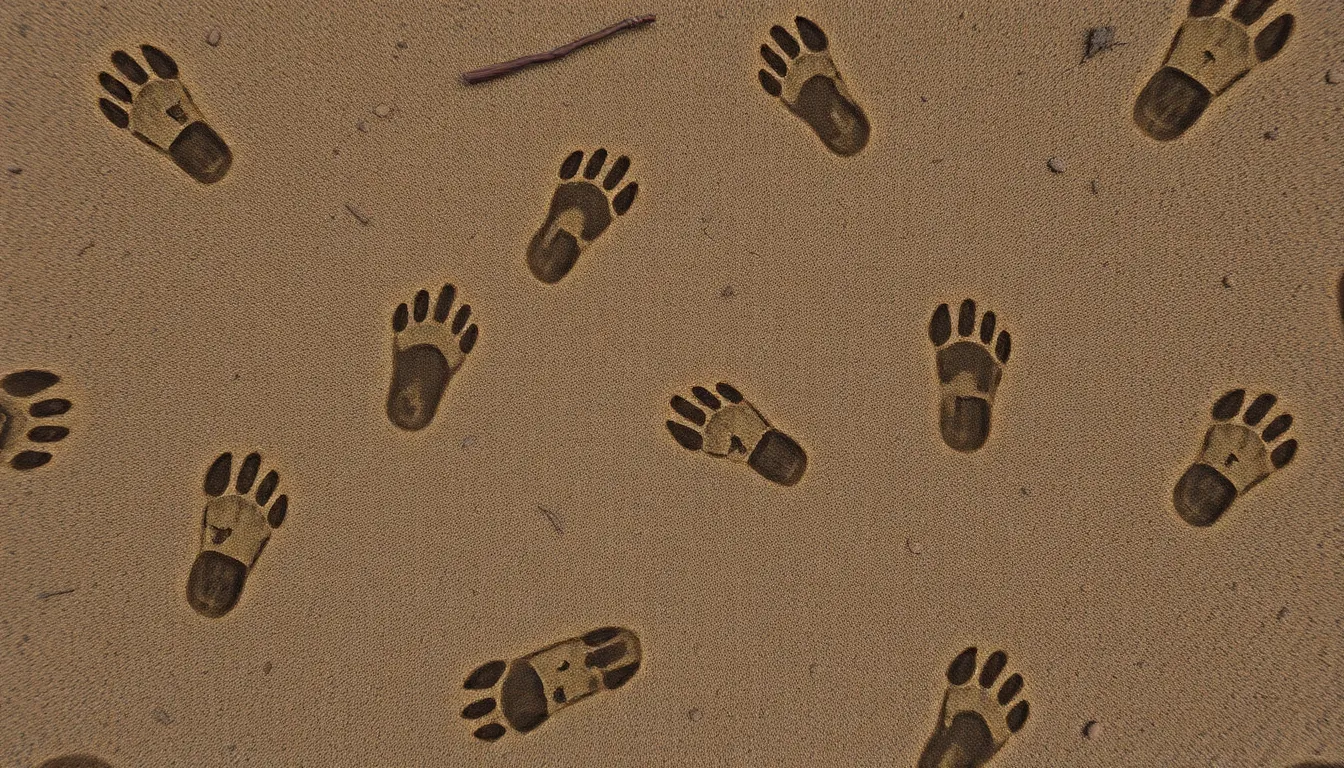
Ground dwelling birds create some of the most distinctive and easily recognizable footprints in nature. These birds spend important time walking and foraging on the earth’s surface, leaving clear track patterns that tell fascinating stories about their daily activities.
Chicken and Turkey Track Patterns
Chickens produce three toed forward facing tracks measuring 2 to 3 inches in length with distinctive scratch marks extending from each toe impression. Their footprints show pronounced claw marks since they use these sharp appendages for constant scratching and digging behaviors while searching for insects, seeds, and other food items.
Domestic chickens create deeper impressions in soft soil due to their heavier body weight compared to wild relatives. We often observe parallel scratch lines radiating outward from chicken tracks, indicating their characteristic backward kicking motion during foraging activities.
Turkey tracks measure significantly larger at 4 to 5 inches long and display the same three forward facing toe pattern as chickens but with much more pronounced size and depth. Wild turkeys leave impressive heel pad impressions that distinguish them from other ground dwelling birds, creating tracks that appear almost hand like in sandy or muddy substrates.
Quail and Pheasant Footprint Features
Quail footprints measure approximately 1 to 1.5 inches in length and show three forward facing toes with small but sharp claw marks at each toe tip. These compact tracks often appear in tight clusters since quail travel in coveys and maintain close proximity while foraging for seeds and small insects.
Northern bobwhites create the most common quail tracks we encounter, with delicate impressions that show minimal heel pad contact due to their light body weight. Their tracks frequently appear alongside small scratched areas where they’ve disturbed leaf litter during feeding activities.
Pheasant tracks measure 2.5 to 3.5 inches long and display robust three toed impressions with prominent claw marks extending well beyond each toe pad. Ring necked pheasants produce deeper track impressions than quail due to their larger size and heavier build, often creating clear heel pad marks in suitable tracking conditions.
Male pheasant tracks sometimes show additional disturbance patterns around the footprints, indicating territorial displays or courtship behaviors performed on the ground.
Dove and Pigeon Track Characteristics
Mourning doves create delicate three toed tracks measuring 1 to 1.5 inches in length with minimal claw impressions due to their primarily arboreal lifestyle and light ground contact. Their footprints show slender toe impressions that reflect their adaptation for perching rather than extensive ground walking.
Dove tracks often appear in pairs or small groups near water sources, feeding areas, or dust bathing locations where these birds spend their limited ground time. We notice that dove impressions tend to be shallow and may only show clearly in fine sand or perfect mud conditions.
Rock pigeons produce larger ground dwelling bird footprints measuring 1.5 to 2 inches long with more substantial toe pad impressions than doves. Urban pigeons create tracks that show adaptation to hard surfaces, often displaying worn or blunted claw marks from constant contact with concrete and pavement.
Pigeon footprints frequently appear in large concentrations around feeding areas, creating overlapping track patterns that indicate their social feeding behaviors and tolerance for close proximity to other individuals.
Analyzing Seasonal Bird Footprint Changes
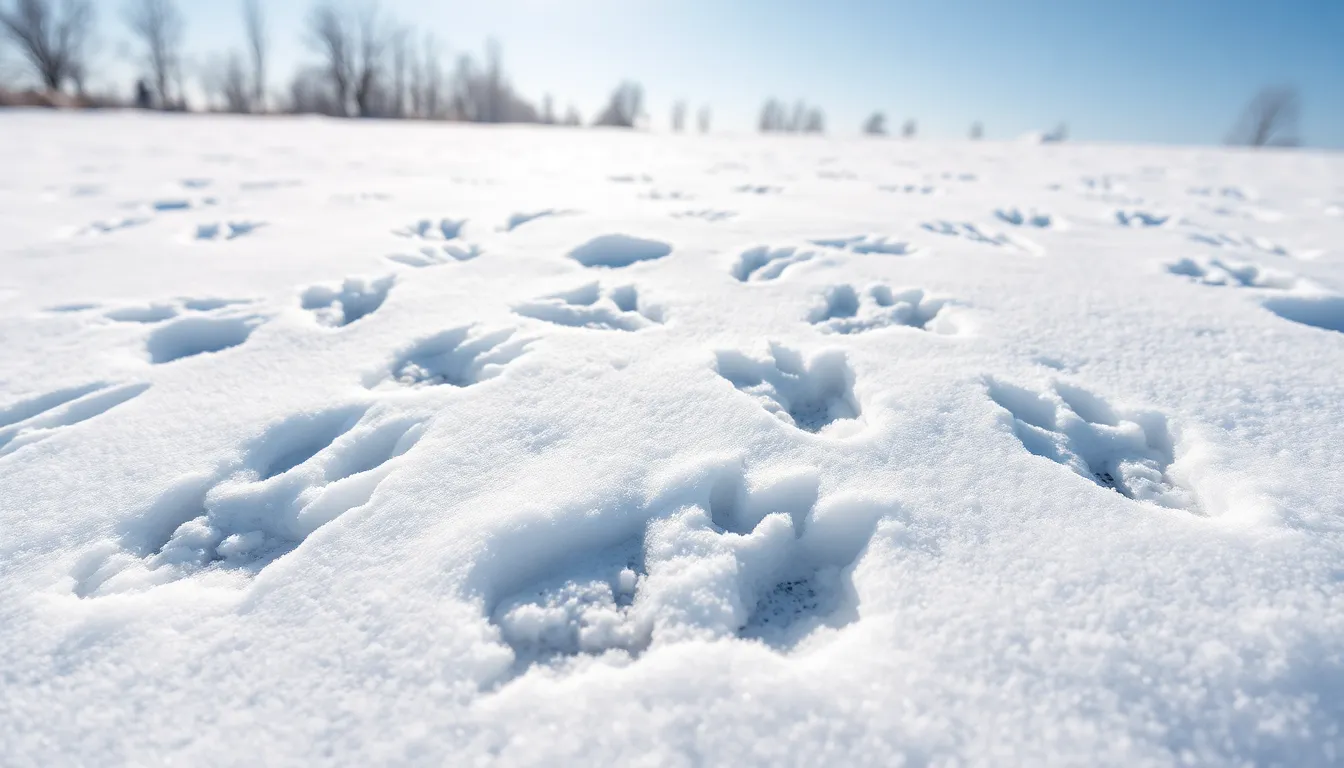
Weather conditions and seasonal changes dramatically affect how bird footprints appear in different substrates. We’ll explore how these environmental factors impact track visibility and identification throughout the year.
Winter Snow Track Impressions
Snow provides exceptional conditions for capturing detailed bird footprint impressions with remarkable clarity. Fresh powder snow records every detail including individual toe marks, claw impressions, and even feather drag marks from wings touching the ground during takeoff. We find that tracks measuring 2 to 4 inches deep in snow typically indicate larger birds like crows or hawks, while smaller songbird tracks create impressions only 0.5 to 1 inch deep.
Compressed snow conditions reveal different information about bird behavior patterns. Birds walking across firm snow leave shallow impressions that show clear toe spacing and gait patterns. Cardinals and blue jays create distinctive hopping patterns with paired footprints spaced 4 to 6 inches apart. Ground feeding birds like juncos and sparrows produce scattered track clusters around feeding areas where they’ve been scratching through snow layers.
Temperature fluctuations affect snow track preservation significantly. Tracks made during warm days often melt and refreeze, creating enlarged impressions that can mislead identification efforts. Fresh morning tracks in undisturbed snow offer the best conditions for accurate measurements and species identification.
Muddy Spring Footprint Conditions
Spring mud creates perfect casting material for preserving intricate bird footprint details. Wet clay and silt substrates capture every ridge and valley of toe pads, nail impressions, and webbing patterns with exceptional precision. We observe that shorebird tracks like sandpipers and plovers appear most detailed in firm mud along water edges where moisture content remains consistent.
Rainfall intensity directly impacts mud track quality and longevity. Light spring rains create optimal mud consistency for track formation, while heavy downpours wash away existing impressions within hours. Waterfowl tracks including ducks and geese show remarkable detail in muddy pond edges, with web patterns clearly visible between toe impressions measuring 3 to 4.5 inches across.
Drying mud conditions preserve bird footprints for extended periods. Tracks made in morning mud often harden by afternoon, creating permanent impressions that last weeks or months depending on weather exposure. Great blue heron tracks measuring up to 6 inches long become fossilized in dried mud flats, showing individual toe details and stride lengths up to 24 inches.
Summer Dust and Sand Patterns
Dry summer conditions present unique challenges and opportunities for bird footprint analysis. Fine dust particles capture surface impressions but lack the depth detail found in mud or snow substrates. Dove and pigeon tracks appear as shallow depressions in dusty areas around grain sources, showing three forward facing toes and distinctive walking patterns.
Sandy substrates offer excellent track definition when moisture levels remain moderate. Beach environments provide ideal conditions for shorebird footprint studies, with tracks visible for hours before wind or waves erase them. Sandpiper tracks create delicate impressions measuring 0.75 to 1.5 inches, while larger shorebirds like willets leave tracks up to 2.5 inches across.
Wind patterns significantly affect summer track preservation. Morning calm periods offer optimal viewing conditions before afternoon breezes obscure track details. Sheltered areas near buildings or vegetation provide protected zones where bird footprints remain visible throughout hot summer days, particularly valuable for studying urban bird populations and feeding behaviors.
Measuring and Recording Bird Footprint Data
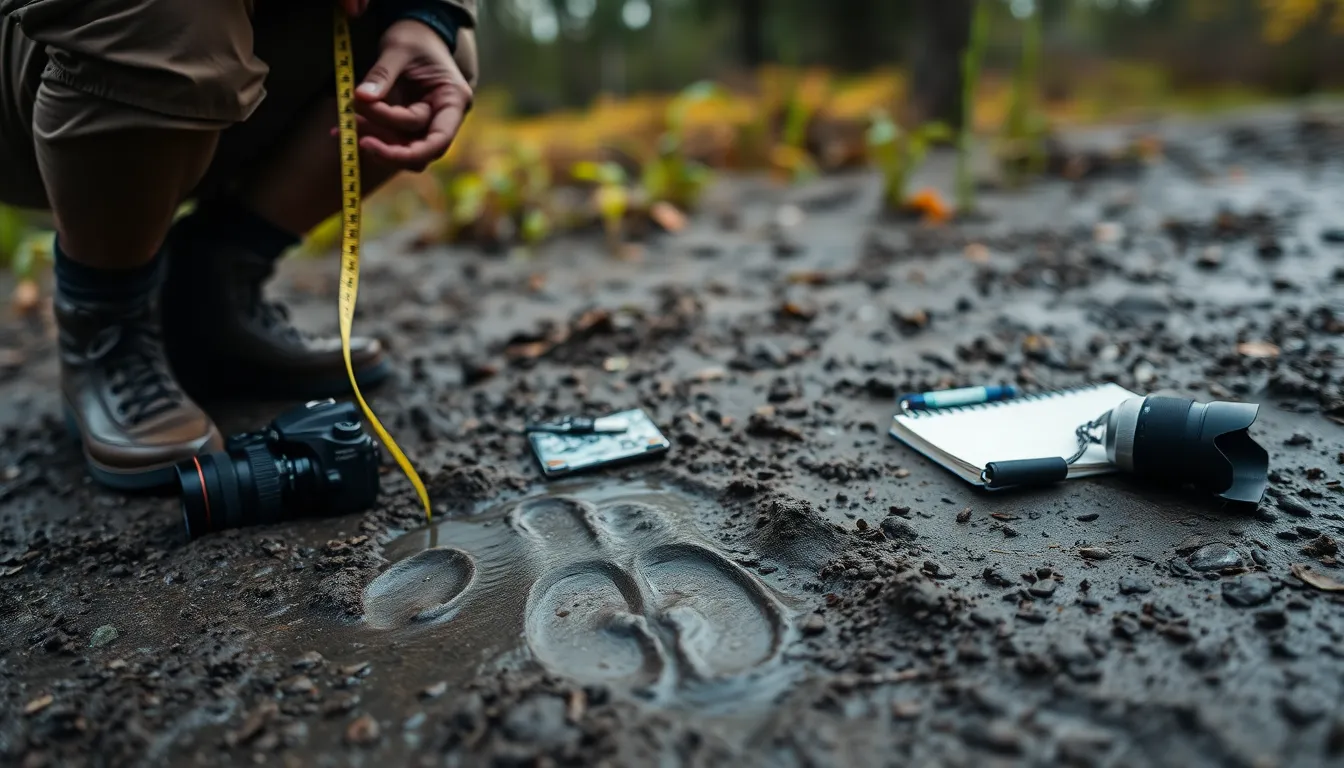
Accurate measurement and documentation transform casual track observation into valuable scientific data that contributes to wildlife research and conservation efforts.
Essential Tools for Track Documentation
Measuring rulers serve as the foundation of precise track documentation, with flexible fabric tape measures proving most effective for field conditions. Metal rulers work best on firm surfaces like dried mud or compact sand, while plastic versions handle wet environments without damage. Calipers provide millimeter precision when measuring individual toe segments or claw marks in detailed studies.
Digital cameras capture visual evidence that supplements written measurements and preserves track details for later analysis. Smartphone cameras offer convenience and GPS location data, though dedicated macro lenses reveal intricate features like feather impressions or scale patterns. Photo scales placed beside tracks establish size reference points that enhance measurement accuracy.
Casting materials create permanent three-dimensional records of exceptional track finds using plaster of Paris or dental stone compounds. Silicone putty offers flexibility for fragile impressions in loose substrates, while traditional plaster works best for deep, well-defined tracks. Casting rings contain liquid materials and prevent spreading during the setting process.
Field notebooks with waterproof pages protect data collection efforts from weather exposure and accidental moisture damage. Pencils outperform pens in cold conditions and won’t smear when pages become damp. Grid paper facilitates accurate sketches and maintains consistent proportions in track drawings.
Proper Measurement Techniques
Track length measurements extend from the tip of the longest toe to the heel or back edge of the footpad impression. Position rulers parallel to the track’s longest axis and record measurements in both inches and millimeters for universal compatibility. Multiple measurements of the same track often vary slightly, so we recommend taking three readings and calculating the average.
Width calculations span the widest point of the track, typically across the outer toes in anisodactyl foot patterns. Measure perpendicular to the length axis and include any claw marks that appear as part of the primary impression. Webbed tracks require width measurements both with and without the web membrane for accurate species identification.
Stride patterns reveal crucial behavioral information by measuring distances between consecutive footprints of the same foot. Walking gaits show regular spacing of 4 to 8 inches in most songbirds, while hopping patterns create paired impressions with gaps of 6 to 12 inches. Running or alarmed birds produce irregular spacing with longer distances between track groups.
Depth measurements indicate substrate conditions and bird weight distribution using thin probes or straightened paper clips. Consistent depth across the track suggests firm ground contact, while deeper heel impressions indicate softer substrates or heavier birds. Measure at three points within each track and record the deepest impression for comparison purposes.
Creating Accurate Field Notes
Location documentation requires precise GPS coordinates or detailed landmark descriptions that enable track site relocation for future studies. Record elevation, habitat type, and distance from water sources or feeding areas that influence bird presence. Weather conditions during track formation affect preservation quality and should include temperature, humidity, and recent precipitation data.
Time stamps establish when tracks were discovered and estimate their age based on environmental conditions and substrate characteristics. Fresh tracks in mud show sharp edges and clear details, while older impressions display weathering effects like edge softening or partial filling. Note the discovery time alongside estimated track age for temporal context.
Behavioral observations connect track patterns to witnessed bird activities or inferred behaviors based on track characteristics and environmental context. Feeding signs near tracks include scattered seeds, overturned leaves, or probe holes in soft ground. Territorial markings appear as repeated track patterns in exact areas or unusual track arrangements.
Substrate descriptions document the material that captured the track impression and its condition during formation. Firm sand reveals fine details like scale patterns, while soft mud captures deep impressions with less surface detail. Consistency, moisture content, and particle size affect track quality and preservation potential for different bird species.
Using Technology for Bird Footprint Analysis
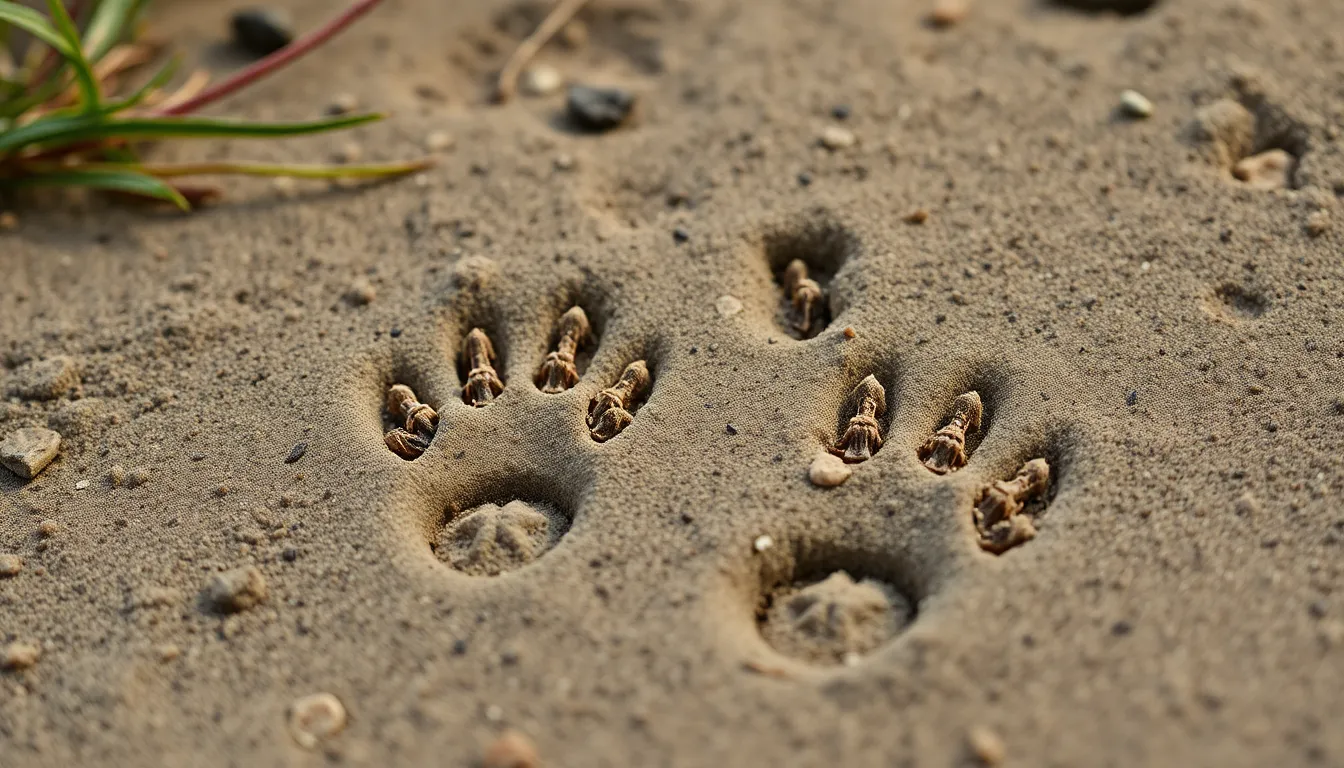
Modern technology transforms bird footprint analysis from guesswork into precise identification. Digital tools enhance our ability to document, analyze, and share discoveries with the birding community worldwide.
Mobile Apps for Track Identification
iTrack Wildlife leads the field with its comprehensive database of North American bird tracks. We can photograph footprints directly through the app and receive instant species suggestions based on size, shape, and location data. The app’s GPS integration automatically records coordinates and habitat information for each discovery.
Merlin Bird ID by Cornell Lab extends beyond bird identification to include track recognition features. Users upload footprint photos and answer guided questions about track characteristics to narrow down potential species matches. The app’s offline functionality proves invaluable during remote field excursions where cellular coverage remains spotty.
Animal Tracks offers detailed comparison tools that overlay our photos with reference images. We can adjust transparency levels to match track features precisely and access measurement tools within the interface. The app includes seasonal tracking calendars that highlight optimal times for finding exact species’ footprints.
PlantNet style crowd-sourcing appears in specialized tracking apps like Track Finder Pro. Community members verify identifications and share local sighting information that improves accuracy rates. Expert naturalists provide feedback on submitted photos within 24 to 48 hours.
Photography Tips for Clear Documentation
Natural lighting produces the most accurate footprint photographs between 7 AM and 10 AM when shadows create optimal definition. We position ourselves to avoid casting shadows across the track while ensuring sufficient contrast between the impression and surrounding substrate. Side lighting emphasizes depth and reveals subtle details that overhead lighting often obscures.
Scale references should appear in every footprint photograph using coins, rulers, or dedicated photo scales. Quarter coins measure exactly 0.955 inches in diameter and provide instant size comparison for viewers. We place scale objects adjacent to tracks rather than directly on them to preserve the original impression.
Multiple angles capture comprehensive track documentation through overhead shots, 45-degree angles, and close-up detail images. Wide shots establish environmental context while macro photography reveals claw marks, pad textures, and toe separations. We take 3 to 5 photos per track to ensure at least one image meets publication standards.
Camera settings for track photography require manual focus modes to ensure sharp impressions rather than background elements. We use aperture settings between f/8 and f/11 to maximize depth of field while maintaining adequate shutter speeds. ISO values stay below 400 to minimize noise that can obscure fine track details.
File naming conventions organize digital track libraries using standardized formats like “YYYY-MM-DD_Species_Location_TracknNumber.jpg”. This system enables quick searches and prevents duplicate documentation of the same tracks. We backup files immediately using cloud storage services to protect valuable field research.
Digital Field Guides and Resources
eBird integrates track sighting data with bird occurrence records to validate identifications and predict species presence. We can cross-reference footprint discoveries with recent bird observations in the same geographical area. The platform’s abundance charts indicate seasonal likelihood of encountering exact species’ tracks.
AllAboutBirds.org provides comprehensive track identification guides with high-resolution reference photos and detailed descriptions. Interactive features allow us to filter results by region, habitat type, and track size measurements. The website’s expert-reviewed content ensures accuracy for both amateur and professional naturalists.
iNaturalist creates collaborative identification opportunities through its global community of wildlife enthusiasts and researchers. We upload track photos with location data and receive species suggestions from multiple contributors. The platform’s AI suggestions improve continuously as the database expands with verified observations.
Bird Track Database from the National Wildlife Federation offers printable identification cards and measurement templates. We can download region-exact guides that focus on locally common species and their distinctive footprint characteristics. The database includes seasonal migration timing that correlates with track discovery opportunities.
YouTube channels like “Nature Tracking” and “Wilderness Awareness” provide video tutorials demonstrating proper footprint analysis techniques. We can observe real-time identification processes and learn advanced skills like aging tracks and interpreting behavior patterns. These visual resources complement traditional field guides with ever-changing instruction methods.
Common Bird Footprint Identification Mistakes
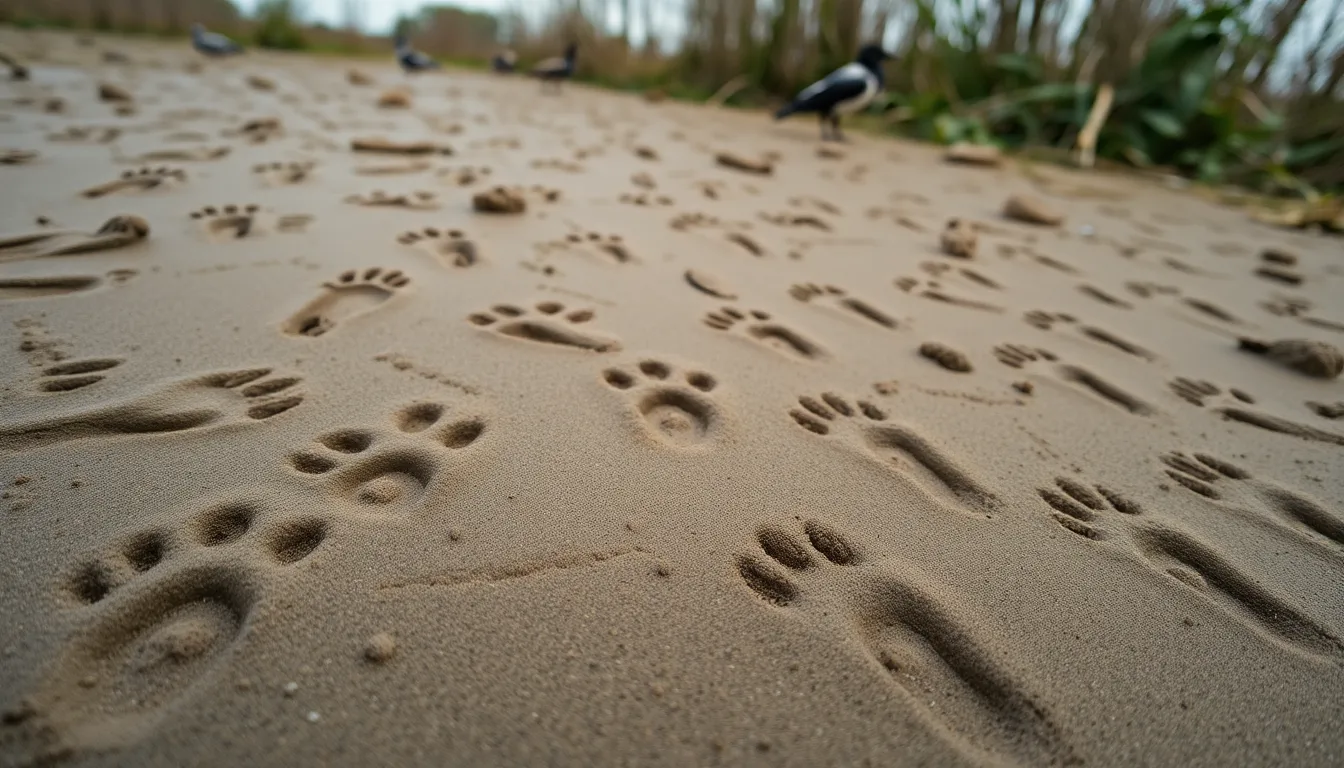
Even experienced naturalists make errors when identifying bird footprints, often due to subtle similarities between species or challenging environmental conditions. We’ll explore the most frequent mistakes that can lead to misidentification and how to avoid them.
Confusing Similar Species Tracks
Crow and raven footprints cause frequent confusion since both corvids create nearly identical three-toed tracks measuring 2.5 to 3.5 inches. Ravens typically leave deeper impressions with slightly longer toe marks, but distinguishing them requires examining stride patterns and habitat context.
Mallard and pintail duck tracks share webbed patterns that challenge even seasoned trackers. Mallards create broader, more rounded impressions measuring 2.5 to 3 inches, while pintail tracks appear narrower with elongated middle toes extending 3 to 3.5 inches.
Great blue heron and sandhill crane prints both feature long, straight toes but differ in proportions and spacing. Heron tracks measure 4 to 6 inches with more delicate toe impressions, whereas crane footprints span 4.5 to 7 inches with thicker, more robust toe marks.
Sparrow species identification becomes problematic when tracks measure between 0.8 to 1.2 inches, as house sparrows, song sparrows, and white-crowned sparrows create similar patterns. Track depth and claw mark sharpness provide the most reliable distinguishing features.
Turkey and large chicken tracks share three-toed patterns measuring 3.5 to 5 inches, making species determination difficult in rural areas. Wild turkey prints typically show sharper claw marks and wider toe spacing compared to domestic chicken impressions.
Environmental Factors That Distort Prints
Substrate hardness dramatically affects track appearance, with concrete surfaces showing only partial impressions while soft mud captures complete footprint details. Hard-packed earth reveals claw marks more clearly than toe pad impressions, creating incomplete identification data.
Weather conditions alter footprint clarity within hours of track creation, as wind erosion removes fine details and rain enlarges impressions beyond normal parameters. Fresh snow preserves excellent detail for 2 to 4 hours before sublimation begins distorting track edges.
Moisture levels in soil create varying track depths that mislead size estimates, with oversaturated ground producing exaggerated impressions up to 20% larger than actual foot dimensions. Dry conditions result in shallow, incomplete tracks that miss critical identification features.
Substrate texture influences which track elements appear most prominently, as sandy surfaces emphasize claw marks while clay substrates better preserve toe pad details. Mixed substrates create partial impressions that combine characteristics from multiple surface types.
Temperature fluctuations cause track expansion and contraction, particularly in mud and clay substrates where freeze-thaw cycles alter original dimensions by 10 to 15%. Morning frost can sharpen track edges while afternoon heat softens and blurs impression boundaries.
Age-Related Track Variations
Juvenile bird footprints measure 60 to 80% smaller than adult tracks, leading to species misidentification when age factors aren’t considered. Young robins create tracks similar to adult sparrows, while juvenile crows produce impressions resembling adult starling footprints.
Breeding season changes affect track depth and spacing as birds carry extra weight during egg development and nesting periods. Female waterfowl tracks appear 15 to 25% deeper during breeding season compared to winter impressions.
Molt period variations influence track clarity as birds experience reduced mobility and altered gait patterns during feather replacement cycles. Tracks from molting birds often show irregular spacing and uneven pressure distribution.
Seasonal weight fluctuations create track depth variations of up to 30% between summer and winter impressions, with birds building fat reserves for migration creating deeper, more pronounced footprints. Spring tracks typically appear lighter as birds recover from winter energy demands.
Growth stage tracking requires understanding that juvenile tracks change weekly during rapid development phases, with young raptors showing 10 to 15% size increases between consecutive track sets. Fledgling tracks often display unsteady gait patterns and irregular toe positioning.
Conclusion
Bird footprint identification opens up a remarkable window into the secret lives of our feathered neighbors. We’ve discovered that these natural signatures tell compelling stories about behavior feeding patterns and habitat preferences that we’d otherwise miss entirely.
The skills we’ve explored transform every outdoor adventure into an opportunity for discovery. Whether we’re examining the delicate impressions of songbirds or the powerful talon marks of raptors each track connects us more deeply to the wildlife around us.
With modern technology and traditional fieldwork techniques at our disposal we’re better equipped than ever to document and understand these fascinating natural records. Every footprint we encounter contributes to our growing appreciation of the incredible diversity and adaptability of birds in our shared environment.
Frequently Asked Questions
What are the three main types of bird feet that create different footprint patterns?
The three main types of bird feet are anisodactyl (three toes forward, one back), zygodactyl (two toes forward, two back), and palmate (webbed feet). Each type creates distinctive patterns in mud, sand, or snow that help identify different bird species and their behaviors.
How can I tell the difference between hawk and eagle footprints?
Hawk and eagle footprints both measure 2.5 to 4.5 inches and show sharp talon marks with widely spaced toe impressions. The main difference is size – eagle tracks are typically larger and deeper, reflecting their greater body weight and more powerful talons used for hunting.
What makes owl footprints unique compared to other raptors?
Owl footprints are distinctive because of their feathered feet, which create softer, less defined impressions around the toe marks. The tracks show variations in size and spacing that reflect their ground hunting habits, and the feathering often leaves fuzzy outlines in the substrate.
Why do songbird footprints vary so much between species?
Songbird footprints vary because each family has different anatomy and foraging behaviors. For example, American robin tracks are fan-like and measure 1.5-2 inches, while smaller species create proportionally different patterns. These variations reflect their specific feeding habits and habitat preferences.
What weather conditions are best for finding clear bird footprints?
The best conditions for clear bird footprints are fresh snow, muddy spring ground, and firm wet sand or dried mud. Snow captures detailed impressions showing bird size and behavior, while muddy conditions preserve intricate track details that reveal toe patterns and claw marks.
What essential tools do I need for documenting bird footprints?
Essential tools include a measuring ruler for scale, digital camera for photography, casting materials for permanent records, and a field notebook. Modern additions include mobile apps like iTrack Wildlife and Merlin Bird ID for identification assistance and GPS devices for location recording.
How do seasonal changes affect bird footprint visibility and quality?
Seasonal changes significantly impact track quality. Spring mud preserves detailed impressions, winter snow shows excellent definition, summer dust and sand reduce visibility, and fall leaf litter can obscure tracks. Weather conditions like rain, wind, and temperature fluctuations also affect track preservation.
What are the most common mistakes when identifying bird footprints?
Common mistakes include confusing similar species (like crows and ravens), misinterpreting tracks distorted by environmental factors, and not accounting for age-related size variations. Substrate hardness, weather conditions, and breeding season changes can all affect track appearance and lead to misidentification.

